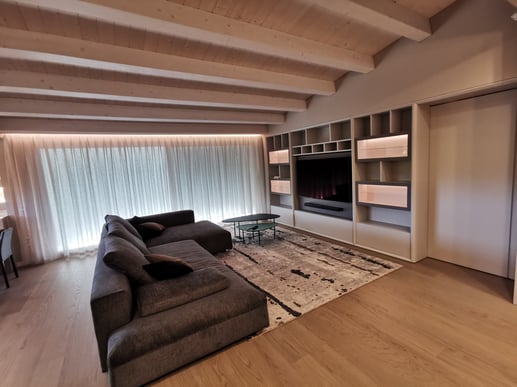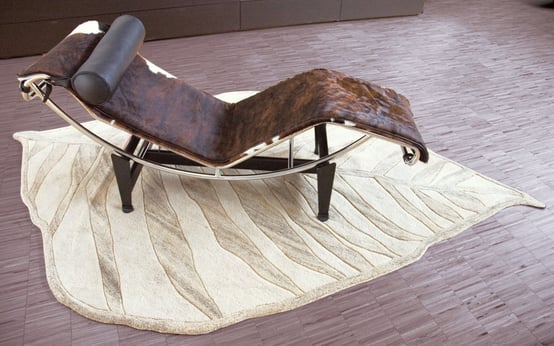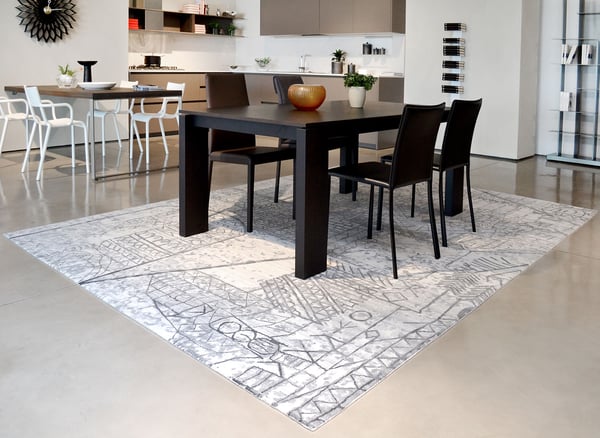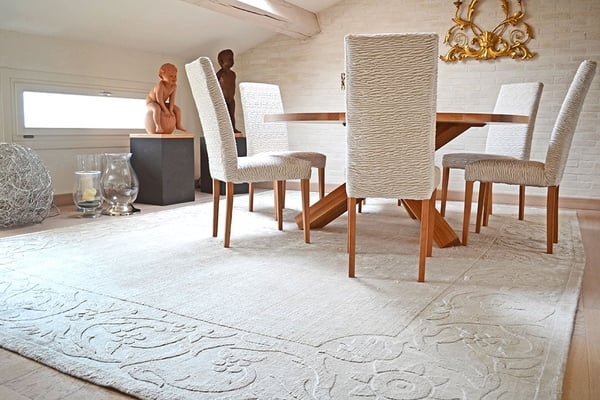
There are various factors to consider when choosing a rug to add to your home: your budget, décor style, personal taste and the rug pattern will all be key to the decision. But once all that has been decided, you're faced with the most important question of all: where and how to place the rug? Today we're looking at the most common pitfalls to avoid when placing a rug.
Interior design tastes and trends have changed. The general consensus today is that a rug should enhance the harmony and beauty of the surrounding space, without taking absolute centre stage or serving a specific role.
So let's look at some of the most common pitfalls to avoid when placing a rug.
1.Placing the rug too close to the walls
Leaving space between the rug and the surrounding walls brings a sense of harmony, proportion and airiness to the room. If a rug is too big, or placed too close to the wall, it risks creating a claustrophobic "carpet" effect, failing to properly showcase the décor and the rug itself.
While there will always be exceptions, if we had to suggest a rule of thumb for placing the rug, we would recommend leaving approximately 40 cm between the rug and the wall.

2.Very small rugs don't work for us
It's not always true that less is more. While an overly big rug can detract from its surroundings, the same is true of one that is too small.

If a rug is too small and placed in a living room, for example, it can make the room feel even emptier and sadder, getting lost despite its quality and craftsmanship.
3.Covering nice floors
Often, rugs are regarded simply as functional objects that cover the floor. Nothing could be further from the truth!
Using an oriental rug to cover an old, ugly, damaged floor might be a smart move. But placing multiple, large rugs close together on wooden floors or other fine flooring material is to be avoided.
A nice floor will frame a beautiful rug placed on top of it, provided that the rug is the right size, as mentioned above.
4.The right size for a dining room rug
A dining room rug should ideally be bigger than the area occupied by the table and chairs.
A rug that extends approximately 60 cm beyond the sides of the table has various advantages:

- it makes the dining room more harmonious (if the rug is too small, it will have little impact);
- it makes it easier to move the chairs, without them getting stuck on the edges of the rug;
- it ensures that the most delicate parts of the rug – i.e. the edges and the fringe – don't get damaged by the constant scraping of chair legs.
The same is true for the bedroom. If, instead of individual bedside mats, you prefer a large rug that covers the entire area underneath the bed, it should ideally extend at least 30 cm beyond the bed on three sides.
5. Combining rugs that are too different
Combining rugs with colours and styles that are too different from each other risks creating a muddled effect.
That said, they certainly don't need to be identical either. Rather, they should have similar characteristics, related colours and work well with the surrounding décor.
Other advice on placing a rug
Always try the rug before buying it
Ideally, you should try a rug at home before buying it, to make sure that it works well in the space, thus dispelling any doubt.
One thing that sets Sartori apart is that we let customers bring home any rug(s) they're unsure about, allowing them to place them, try them and decide.

Placing the rug in relation to the source of light
It may seem trivial, but don't underestimate this point!
The rug will look very different depending on how you place it, including in relation to the light: placing it so that the pile direction faces away from the light source will make the colours stand out more.
Always trust the experts and seek advice. Dealing with someone who is helpful, transparent and trustworthy is key to choosing the right rug.
Buying a carpet means making a home elegant and refined, with a timeless style. To discover all the secrets for decorating your home with modern rugs that suit your style, read the free guide!


